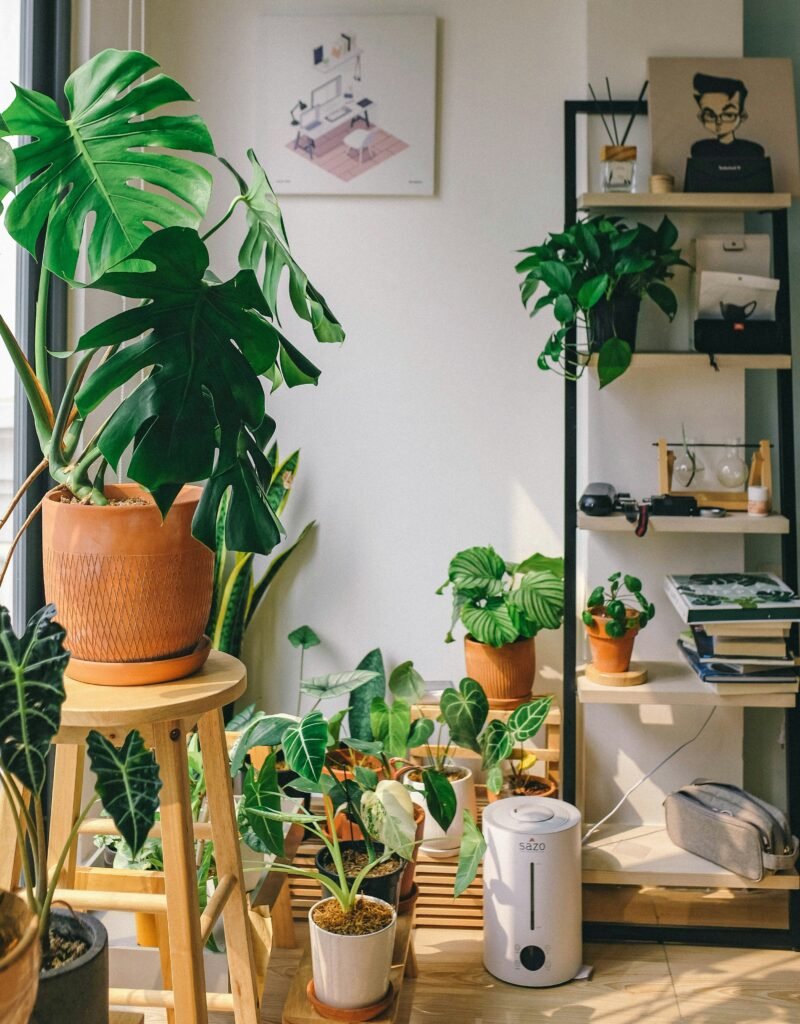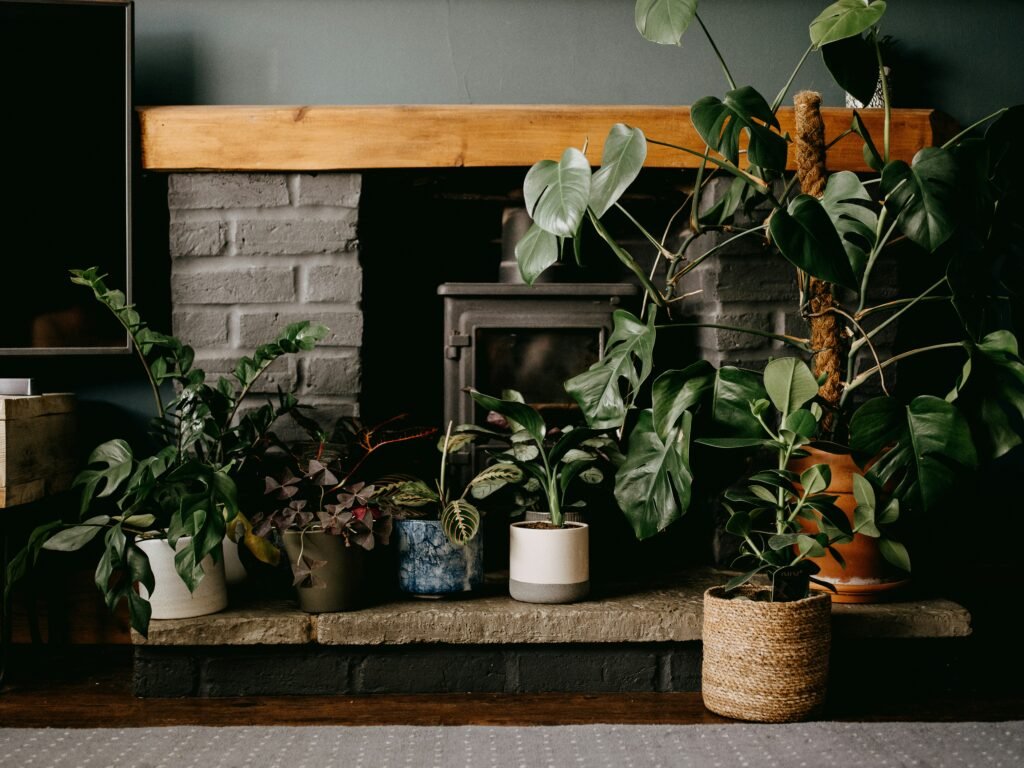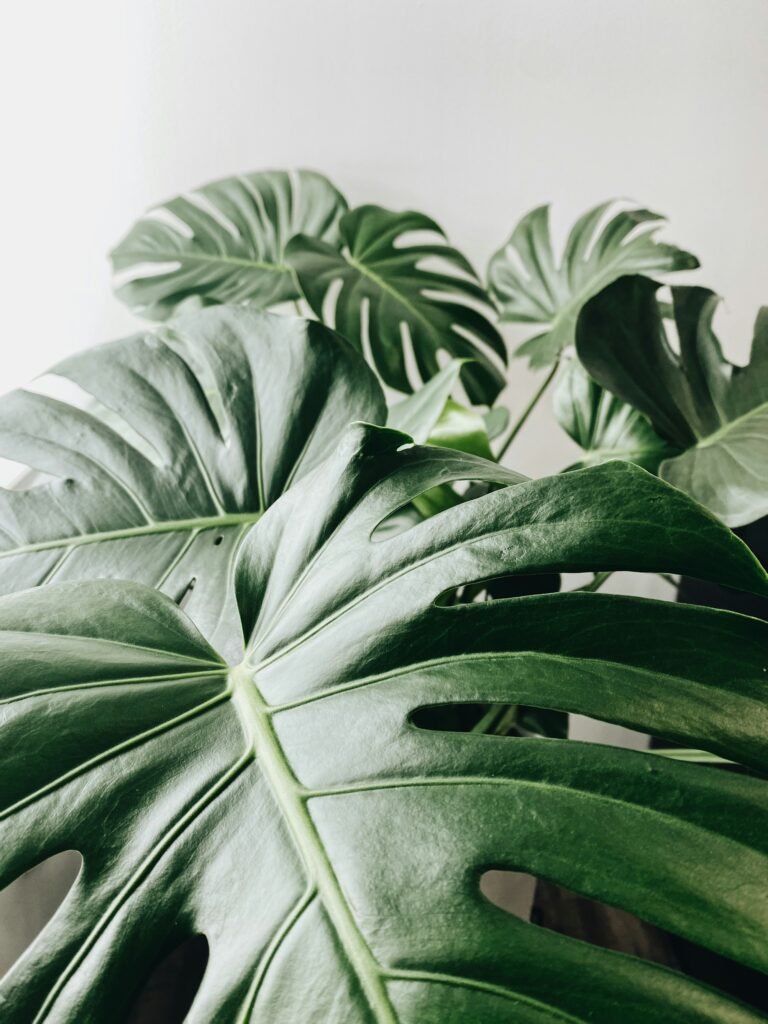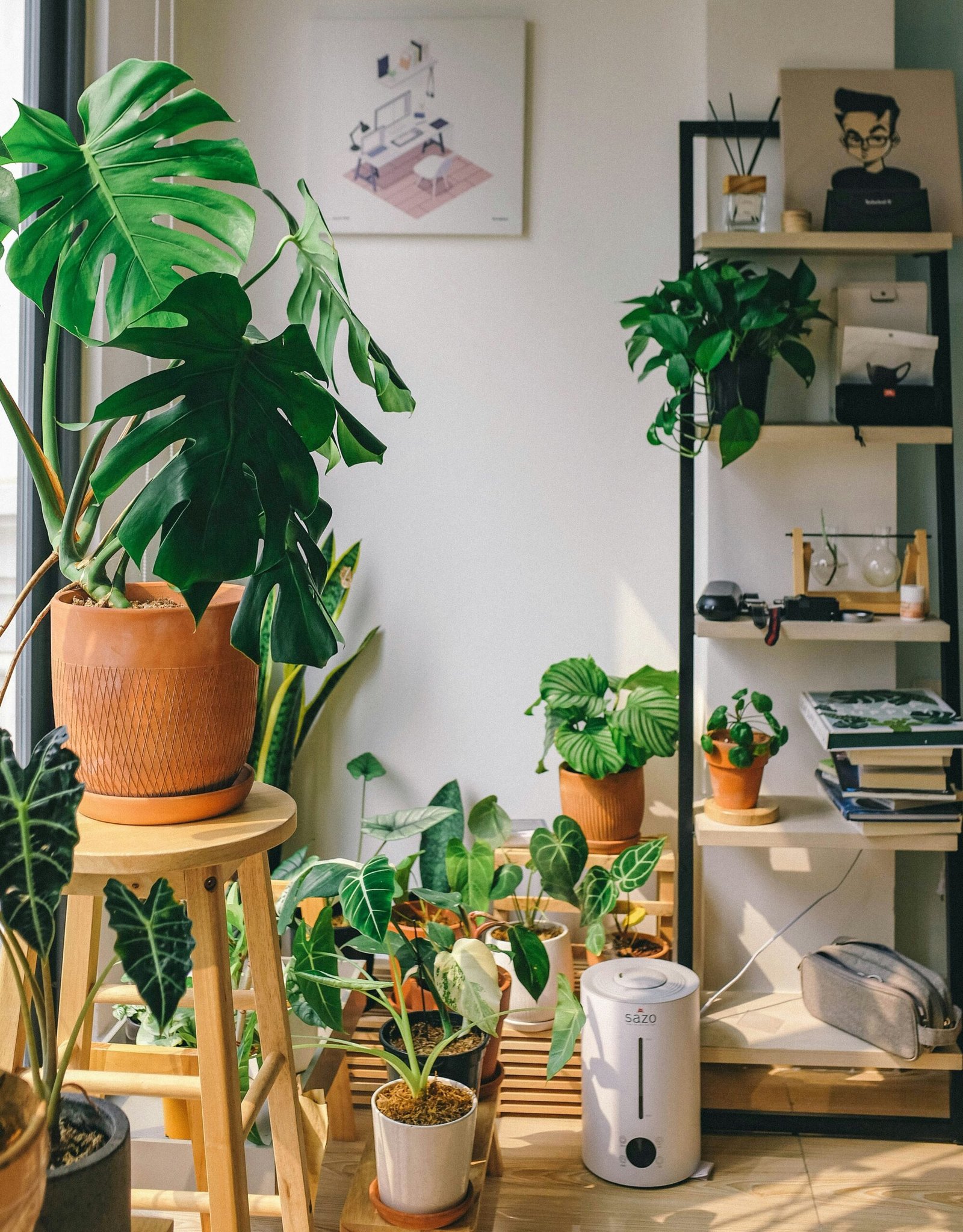Would you like to transform your bedroom into a calm, green sanctuary using plants?
How Can I Decorate My Bedroom With Plants?
You can make your bedroom feel more vibrant, soothing, and fresh by adding plants thoughtfully. This guide shows you how to pick, place, and care for plants so they enhance your style, improve air quality, and suit your lifestyle.
Why Add Plants to Your Bedroom?
Plants add life, color, and texture to a space, and they can improve air quality and mood. You’ll find that the right plants also help soften hard lines, add visual interest, and make your room feel more personal and restful.
Key Considerations Before You Start
Before buying plants, think about lighting, space, pets, and how much time you’ll spend caring for them. These basic decisions help you choose plants that will thrive and fit your routine.
Assess Your Bedroom Light
Knowing how much natural light your bedroom gets is essential, since plant needs vary widely. Observe the room at different times of day to judge whether it’s bright, medium, or low light.
Consider Your Lifestyle and Time
Be honest about how much daily or weekly care you’ll provide. If you travel frequently or prefer low-effort decor, choose hardy, low-maintenance plants.
Think About Pets and Allergies
If you have pets or allergies, pick non-toxic choices and plants that don’t trigger symptoms. You’ll avoid risks and keep everyone comfortable.
Choosing Plants by Light Level
Match plant types to your bedroom’s light to keep them healthy and reduce frustration. The table below organizes common bedroom-friendly plants by light needs and overall ease of care.
| Light Level | Typical Window/Area | Plant Suggestions (Beginner Friendly) |
|---|---|---|
| Bright, indirect | East or west windows, near south windows with curtain | Fiddle Leaf Fig, Monstera, Rubber Plant, Kentia Palm |
| Medium (filtered) | North windows, several feet from bright windows | Pothos, Philodendron, Snake Plant, ZZ Plant |
| Low light | Rooms with small windows or shaded corners | Cast Iron Plant, Peace Lily, Spider Plant, Parlor Palm |
Pet-Safe vs Toxic Plants
If you have cats or dogs, prioritize plants that are non-toxic to pets. The table below lists common choices and their safety.
| Plant | Pet Safe? | Notes |
|---|---|---|
| Spider Plant | Yes | Non-toxic; often enjoyed by cats. |
| Boston Fern | Yes | Safe, but needs humidity. |
| Areca Palm | Yes | Pet friendly and adds height. |
| Pothos | No | Toxic to cats/dogs if eaten. |
| Philodendron | No | Toxic; keep out of reach. |
| Snake Plant | No | Mildly toxic; avoid ingestion. |
| Peace Lily | No | Toxic; causes irritation if ingested. |

Low-Maintenance Plants for Busy People
If you want green without fuss, select plants that tolerate low water and inconsistent care. These plants survive occasional neglect and recover quickly.
- Snake Plant (Sansevieria): Tolerant of low light and irregular watering.
- ZZ Plant (Zamioculcas zamiifolia): Survives low light and drought.
- Pothos: Forgiving and easy to propagate.
- Spider Plant: Hardy and tolerant of variable lighting.
- Cast Iron Plant: Extremely durable in low light.
Styling Your Bedroom with Plants
plants can complement any décor style. Use them to emphasize the mood you want — cozy, minimal, tropical, or elegant. Think about texture, height, and pot materials.
Modern Minimalist
If you prefer clean lines, choose sculptural plants like snake plants or fiddle leaf figs. Use simple pots in neutral colors and limit the number of plants to maintain a calm aesthetic.
Bohemian or Eclectic
Mix textures, hanging plants, macramé plant holders, and trailing varieties like pothos or string-of-pearls. Combine clay, woven baskets, and patterned pots for a cozy, layered look.
Tropical or Lush
Create a mini indoor jungle with monstera, palms, and philodendrons. Use larger pots and group plants to mimic a natural, layered canopy effect.
Scandinavian
Focus on light, airy plants and natural materials like wood and linen. Keep arrangements tidy with a few well-placed houseplants like small fiddle leaf figs or snake plants.
Where to Place Plants in Your Bedroom
Placement affects both aesthetics and plant health. Below are functional and decorative ideas with a brief explanation for each.
Bedside Tables
A small plant on your bedside table adds freshness without taking up too much space. Choose compact plants like succulents, small ferns, or a snake plant for good nighttime air benefits.
Windowsills
Windowsills are perfect for sun-loving plants like succulents and cacti. If the sill is deep, you can place a few small pots for a garden-like feel.
Hanging Plants
Hanging planters save floor space and add vertical interest. Choose trailing species such as pothos, string-of-pearls, or heartleaf philodendron to create graceful cascades.
Shelves and Bookcases
Shelves let you mix plants with books and decor. Use trailing plants to soften edges, and place taller plants at ends or on the floor near the shelf.
Corners and Floor Space
Use larger plants like fiddle leaf fig, monstera, or palms to fill empty corners and add height. A statement plant can become a focal point behind a chair or near the bed.
Dresser or Vanity
Low, wide plants like succulents or a small orchid work well on dressers. They add life without obstructing your daily routine.
Containers, Pots, and Styling Tips
The container you choose affects both aesthetics and plant health. Consider material, drainage, and size when selecting pots.
Pot Materials
- Terracotta: Breathable and affordable, dries out faster—good for succulents.
- Ceramic: Decorative and comes with glazes; heavier and better for tall plants.
- Metal: Modern look but can overheat soil near bright windows.
- Woven Baskets: Cozy and stylish; use a drainage-friendly inner pot.
Drainage and Saucer Use
Always use pots with drainage holes or create layered drainage (rocks then soil) to prevent root rot. If you use decorative outer pots without holes, keep inner nursery pots inside and water carefully.
Matching Pots to Style
Match pot colors and textures to your décor. Neutral tones suit minimalist rooms; woven baskets fit boho styles; glossy ceramics can feel contemporary.
Soil, Potting Mixes, and Repotting
The right soil helps plants root properly and retain the right moisture level.
- General indoor houseplant mix: Works for most tropical plants.
- Succulent/cactus mix: Drains quickly, ideal for succulents.
- African violet or orchid mixes: Used for specific flowering or epiphytic plants.
Repot every 1–2 years or when a plant becomes root-bound. Repotting gives roots fresh nutrients and more space.

Watering Guidelines
Watering is one of the most common challenges. Overwatering usually harms plants more than underwatering.
How to Check If a Plant Needs Water
- Stick your finger into the soil about an inch deep; if dry, it’s time to water.
- Use a moisture meter for more accuracy.
- Look for wilted, yellowing leaves (often a sign of overwatering) or dry, crispy leaves (sign of underwatering).
Typical Watering Frequency Table
| Plant Type | Typical Frequency | Notes |
|---|---|---|
| Succulents/Cacti | Every 2–4 weeks | Allow soil to dry completely between waterings. |
| Tropical foliage | Every 1–2 weeks | Keep soil slightly moist but not soggy. |
| Ferns, Calatheas | Once or twice a week | Prefer consistently moist soil and higher humidity. |
| Orchids | Every 1–2 weeks | Use bark mix; water when roots are silvery. |
Adjust frequency based on season, pot size, and light.
Light Management and Artificial Lighting
If your bedroom lacks sufficient natural light, you can use grow lights to supplement plant needs. Choose full-spectrum LED grow lights for energy efficiency and healthy growth.
Types of Grow Lights
- Full-spectrum LED: Good for all stages of plant growth and energy efficient.
- Fluorescent (T5) tubes: Effective for seedlings and small plants.
- Incandescent bulbs: Not recommended due to heat and inefficiency.
Position lights based on plant needs: closer for high-light plants, farther for low-light species.
Humidity and Temperature Considerations
Many popular houseplants prefer moderate to high humidity. Bedrooms with dry air (especially in winter) may need extra humidity.
Ways to Increase Humidity
- Group plants together to create a local humid microclimate.
- Use a humidifier near the plant group.
- Place plants on a tray filled with pebbles and water (roots should not sit in water).
- Mist delicate plants occasionally, though this effect is short-lived.
Most bedroom plants like temperatures between 65–75°F (18–24°C) and prefer to avoid cold drafts or heaters.
Grouping and Arranging Plants for Impact
Grouping plants creates visual interest and helps maintain humidity. Use varying heights, textures, and pot sizes.
Design Rules for Grouping
- Use odd numbers (3 or 5) for more pleasing arrangements.
- Arrange with tallest plant at the back, medium in the middle, and shortest in front.
- Vary leaf size and color for contrast and depth.
Hanging Plant Setups and Hardware
Hanging plants save floor space and can be installed near windows. Use secure hooks rated for the pot weight and ceiling type.
- Use toggle bolts for drywall ceilings.
- Consider wall-mounted brackets if ceilings are too low.
- Use decorative macramé or metal hangers that match your style.

Seasonal Care and Adjustments
Plants change needs by season. You’ll water less in winter and more during active growth in spring and summer.
- Spring/Summer: Increase water and fertilize monthly during active growth.
- Fall/Winter: Cut back fertilizing and reduce watering frequency.
Keep an eye on daylight length and adjust artificial light schedules accordingly.
Propagation Ideas and How to Multiply Your Plants
Propagating plants is a budget-friendly way to expand your collection and personalize gifts.
Simple Propagation Methods
- Stem cuttings in water: Works well for pothos, philodendron, and spider plant pups.
- Division: Split root balls for snake plants, ferns, and peace lilies.
- Leaf cuttings: Use for succulents like echeveria and kalanchoe.
Label propagation jars and track progress. Once roots form, move cuttings to potting soil.
Troubleshooting Common Problems
If a plant looks unhappy, diagnosing the problem quickly helps recovery. Here are common issues and fixes.
Yellow Leaves
- Overwatering or poor drainage: Reduce watering and repot if necessary.
- Natural leaf drop: Older leaves may yellow; prune them away.
Brown Leaf Tips
- Low humidity: Increase humidity or group plants.
- Mineral buildup: Flush soil with clean water occasionally.
Pest Problems (Aphids, Spider Mites, Mealybugs)
- Isolate infected plants.
- Wipe leaves and treat with insecticidal soap or neem oil.
- For severe infestations, repeat treatments and consider repotting.
Leggy Growth
- Insufficient light: Move the plant to brighter spot or use grow lights.
- Prune to encourage fuller growth.
Safety Tips for Renters and Shared Spaces
If you rent or share a room, make changes that are reversible and safe.
- Use removable hooks for lightweight hanging plants.
- Avoid drilling without permission.
- Use plant stands and trays to protect floors and furniture from water damage.
Budget-Friendly Plant Decorating Tips
You don’t need a big budget to make a big impact. Use these cost-saving tactics:
- Propagate from friends’ plants or community groups.
- Buy small starter plants and upsize pots later.
- Thrift or repurpose containers as pots.
- Combine one or two statement plants with smaller, cheaper plants.
Where to Buy Plants
You can find plants at garden centers, nurseries, online plant shops, local plant swaps, and farmers’ markets. Buying locally often gets you plants already suited to your climate.
Quick-Care Chart for Popular Bedroom Plants
| Plant | Light | Water | Pet Safe | Difficulty |
|---|---|---|---|---|
| Snake Plant | Low–Bright | Low (every 2–3 weeks) | No | Easy |
| Pothos | Low–Bright | Moderate (every 1–2 weeks) | No | Easy |
| Spider Plant | Medium | Moderate (weekly) | Yes | Easy |
| ZZ Plant | Low–Bright | Low (every 2–3 weeks) | No | Very Easy |
| Peace Lily | Low–Medium | Moderate (weekly) | No | Moderate |
| Fiddle Leaf Fig | Bright, indirect | Moderate (weekly) | No | Moderate |
| Succulents/Cacti | Bright | Low (every 2–4 weeks) | Mostly Yes | Easy |
Maintaining Your Green Bedroom — A Sample Schedule
Having a short schedule keeps plants healthy without overwhelming you.
- Daily: Check for wilting, drooping, or pest activity.
- Weekly: Water appropriate plants, rotate pots for even light exposure, wipe dusty leaves.
- Monthly: Inspect roots, flush soil to remove salts, clean pots and prune if needed.
- Seasonal: Repot if root-bound, change soil, adjust watering and lighting.
Final Styling Checklist Before You Finish
Use this checklist to ensure your bedroom plants are attractive and healthy:
- Match plants to light conditions.
- Select pet-safe plants if needed.
- Choose pots with proper drainage.
- Group plants by care needs.
- Add humidity sources for tropical plants.
- Set a simple care schedule.
- Use one larger statement plant and several smaller companions for balance.
Conclusion
By assessing light, space, and your care habits, you can create a bedroom full of plants that feel intentional and restful. Whether you prefer a minimal look with a couple of sculptural plants or a lush, layered oasis, the right selections and placements will transform your space into a soothing, green retreat. Start small, learn what each plant needs, and enjoy the calming benefits that plants bring to your private space.
